News
-

Scientific breakthrough: revolutionary RNA molecule mapping technology
The technology, developed by the Faculty of Engineering’s Dr. Shahar Alon in collaboration with experts from MIT and Harvard, enables the comprehensive characterization of tissues from complex diseases such as cancer and Alzheimer’s
-

Eli Cohen’s secret quantum language
Eli Cohen’s group joined a new consortium involved in creating a secret code using quantum devices. This code will enable users to transmit secret information in free space and fiber-based networks. His teammates are going to play the bad guys…
-

Pleased to meet you: Dr. Ilan Reuven Cohen
He studies algorithms in states of uncertainty specializes in algorithmic game theory and has found that paid parking garages contribute to our social welfare. Meet Dr. Ilan Reuven Cohen, who recently joined the Faculty of Engineering as a faculty member. We wish him success in his new role.
-
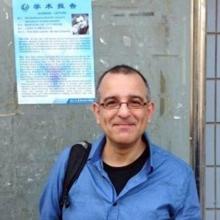
Congratulations, Prof. Amir Leshem
Congratulations, Prof. Amir Leshem, for winning the Ministry of Science’s research grant for computational social sciences. Leshem and his colleagues, Dr. Moran Yarchi and Dr. Zahi Hayat from IDC, are researching the experimental validation of computing models of false information distribution in social networks. Their research will focus on the distribution of Fake News regarding COVID-19 in general, and vaccines in particular.
-
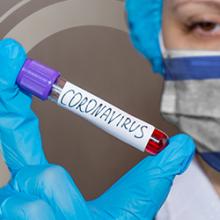
Our Faculty’s representatives at the Knesset
Two technological developments by Faculty researchers were recently presented at a Knesset session of the Science and Technology Committee: a laser-based technology developed by Prof. Ze’ev Zalevsky, which enables remote monitoring of saturation levels in COVID patients, and Dr. Amos Danieli’s revolutionary technology for fast and precise serology tests.
-

Congratulations, Prof. Sharon Gannot
Congratulations, Prof. Sharon Gannot, for winning the IEEE Fellow Award by the world’s largest professional organization for researchers and engineers in academia and the industry. This is the highest rank awarded annually by the organization to only 0.1% of the tens of thousands of its members. Prof. Gannot has promoted to this prestigious rank thanks to his contribution to acoustical modeling and statistical learning in speech enhancement.
-
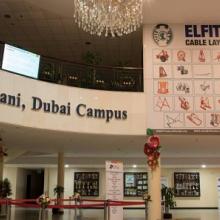
From Bar Ilan to Dubai
Dr. Pranav M. Pawar went on from a post-doctoral position at Prof. Amir Leshem’s lab, where he worked on machine learning techniques for wireless network management on a PBC grant, straight to a teaching position at BITS Pilani, Dubai. A remote interview.
-
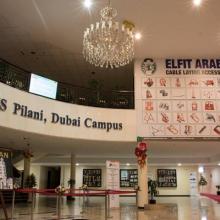
Dr. Pranav Pawar’s position in Dubai
India-native Pawar went on from a post-doctoral position at Prof. Amir Leshem’s lab, where he worked on machine learning techniques for wireless network management on a PBC grant, straight to a teaching position at BITS Pilani, Dubai. “Israel will always be my second home,” says Pawar.
-
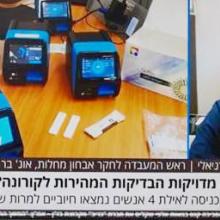
Dr. Amos Danieli’s speedy tests
Dr. Danieli’s diagnostics lab has developed a revolutionary technology for viral disease diagnosis using saliva samples. The technology can produce COVID-19 test results in only 40 minutes – significantly reducing waiting times in labs and enabling faster and much more efficient diagnosis and treatment.
-
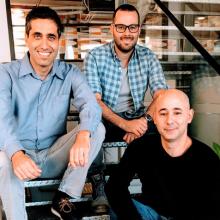
Dr. Allen Becker’s first exit
Faculty alumni, Dr. Becker, developed a technology that replaces human service representatives with virtual AI-based agents. Last month his company, voca.ai, established in 2017 with his partners, was sold to the American Snap, owner of SnapChat, for $70M.
Photo: Guy Dvir -

Spatial sequencing towards curing Alzheimer’s disease
Last month, Michal Danino learned that she was accepted into Intel’s 2021 scholarship program for promoting excellence and diversity in engineering and science. “The scholarship aims to diversify the world of technology and take a part in social change since diversity in technology leads to a better outcome and technological revolutions,” says Danino. “The scholarship was awarded to 25 excelling engineering, computer science, chemistry and physics bachelor and master students who took part in community or volunteer work, promoting diverse communities.” Danino’s eligibility is a result of her high GPA, long years of community service – including MADA, working with special needs children, and encouraging and supporting religious girls who want to join the military – and her research of Alzheimer’s disease.
-
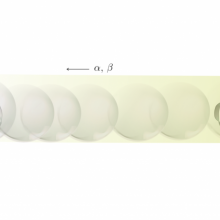
It’s all linked: Dr. Eli Cohen and his colleagues developed a new encryption method using optical framed knots
Knot theory is a mathematical field that greatly affected physics, and vice versa, and was discovered to have a great impact on numerous, versatile avenues in science. In laymen’s terms, knot
stheory describes what happens when we take a string and begin tangling it with itself. The resulting knot has invariant features that do not change even when shifted, rotated, stretched, or squeezed. Major discontinuous changes such as cutting the string or passing it through itself are required in order to destroy these characteristics. That is why these knots, and particularly their braid representation, are relatively stable and resistant to error, so they present an innovative method of information processing, especially in the quantum world. Collaborative research between Eli Cohen of the Faculty of Engineering at Bar Ilan, Prof. Avishy Carmi of Ben Gurion University, and several researchers from the University of Ottawa, headed by Prof. Ebrahim Karimi, demonstrated for the first time framed knots using an optical setup, which was first applied for purposes of secure communications. An article on the research and its outcomes was recently published in Nature Communications. -
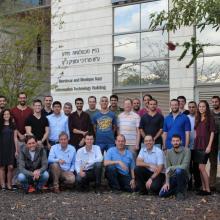
Feeling excellent? Join us!
Prof. Alex Fish talks about the 700 Club, the Faculty’s excellence program, and stresses that this is not another program; it’s an actual club.
-

Exact measurements in quantum computers
A study inspired by Dr. Eli Cohen’s theory explores transitions between strong and weak measurements of trapped ions. Covered by Nature Physics, the study is yet another step on the path to realizing and improving quantum computers
-

Shir Hochold-Lieber - Exposing the mysteries of the human microbiom
Dr. Shir Hochold-Lieber develops a biochip for diagnosing, sensing, and treating the human microbiome. Her work awarded her a postdoctoral scholarship by the Israel Academy of Science.



